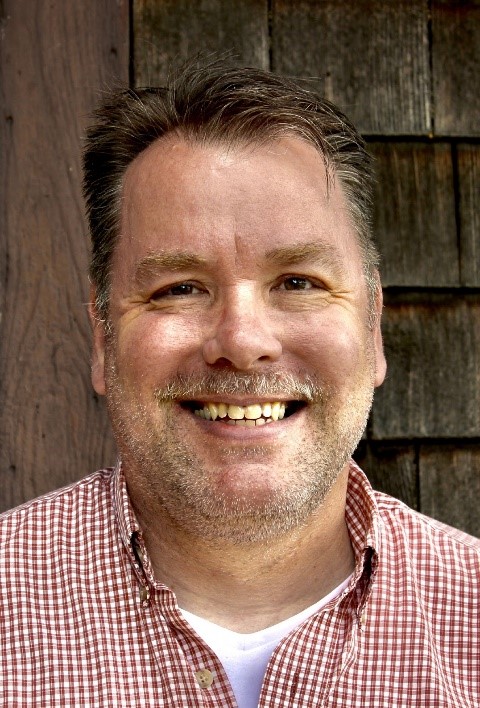Next Gen Navigator
Conference Sessions on Equity, Teacher Collaboration Provide Benefits
By Brian Klaft
Posted on 2021-06-28
Disclaimer: The views expressed in this blog post are those of the author(s) and do not necessarily reflect the official position of the National Science Teaching Association (NSTA).
Many educators will remember Friday, March 13, 2020. For many, it was the last day of “normal” teaching. Since that day, teachers have been instructing students in environments that vary from fully remote to fully in-person, and everything in between. It has been a difficult year, but also a year filled with better understanding. During this year, I have struggled with meeting the needs of all my students and taking time to talk with peers. Gaps within my teaching have formed. My classroom equity has changed, as has the amount of peer collaboration. Those two gaps were also the focus of two NSTA Engage: Spring21 sessions in which I participated this past spring.
Led by NSTA Multicultural/Equity Division Director Alicia Conerly, the session Preparing to Tackle Equity, Diversity, and Inclusion in Science Education reminded me what I can do in my classroom to make it an equitable learning space. The session began with a look at visible and invisible diversity traits. Conerly listed traits like skin color, gender, and physical ability as visible traits. Invisible traits included socioeconomic status, gender orientation, and ethnicity, which made me consider just how many students in my classroom face equity hurdles each day.
Conerly then shared this quote from James Baldwin: “Not everything that is faced can be changed, but nothing can be changed until it is faced.” That quote really resonated with me. Teaching during the COVID-19 pandemic has been difficult. Self-doubt set in, and I often found it difficult to get energized for class. I wondered if I was really ready and able to lead my students through the 2020–21 school year. Baldwin’s quote restored my confidence that I could lead my students. I am able to develop a classroom culture that makes learning and taking risks possible for all of my students. His quote will be front and center in my room next school year. It is a mindset that can benefit all of my students.
Equity is not just acknowledging that diversity exists in the classroom. Equity is a process that establishes the culture in your classroom. The next part of Conerly’s session addressed that process. She emphasized that a positive classroom culture must shift from a “fixed-comfort” mindset to one that is “growth-courage” centered.
That is where I realized my flaw. I like to think I have an equitable classroom. I meet the needs of all my students. Students feel safe to take risks in my classroom. Right? But after Conerly’s session, I knew I needed to move toward a stronger “growth-courage” mindset. While my efforts have worked for some of my students, other students need me to change.
Though Conerly’s session was geared toward preservice teachers, the message she shared about equity is one that a teacher of any experience level needs to hear, then occasionally hear again. Just when we think we have achieved equity, we sometimes find we haven't done so sufficiently. I know I struggle with this, and I’m sure many teachers do as well.
The best way to avoid assumptions about equity is to share your thoughts, ideas, and strategies with other teachers. Listen to what others are saying. The second session that impacted my teaching from Engage: Spring21 was all about talking and listening to peers.
Engage: Spring21 tried a new format; the unconference. Its format is based on the EdCamp model, in which one participant chooses a topic to discuss in a small group; the session then evolves into a half-hour of peer-to-peer learning, which is something we just don’t do enough of during the school year. With this year’s NSTA National Conference in Chicago being canceled, I really missed those conversations with peers, the honest chats between a pair of teachers, or in a small group of teachers trying to grow in our craft. In addition, my students weren’t able to benefit from those new ideas I gain from a conference that I am ready to implement when I return to the classroom.
The Engage: Spring21 unconference helped me fill the “collaboration void” I experienced when the conference was canceled. It is a format that I hope NSTA uses at future events, whether they are face-to-face, virtual, or hybrid.
I enjoyed taking part in sessions at Engage: Spring 21 because it helped me see what I can change about my mindset and how I can improve my pedagogy. It also gave me some time to just be that teacher “talking shop” with my peers. I can’t wait until the STEM21 virtual conference this summer!

Brian Klaft has taught middle school science for 30 years, beginning in the Chicago public school system in 1991. For the last 22 years, he has taught at Francis Granger Middle School in Indian Prairie school district in Aurora, Ilinois. Klaft currently is the NSTA District XII director serving Illinois, Iowa, and Wisconsin. Previously he served as an NSTA curator. Klaft is active on Twitter, where he takes part in various hashtags chats, #NGSSchat being his favorite. You can find him on one of three Twitter pages he oversees: @BK3Dsci, @ngssSfocus, and @IQWSTeducators.
Note: This article is featured in the June 2021 issue of Next Gen Navigator, a monthly e-newsletter from NSTA delivering information, insights, resources, and professional learning opportunities for science educators by science educators on the Next Generation Science Standards and three-dimensional instruction. Click here to sign up to receive the Navigator every month.
The mission of NSTA is to promote excellence and innovation in science teaching and learning for all.
Equity Inclusion Multicultural Professional Learning old Teacher Preparation Teaching Strategies Middle School


